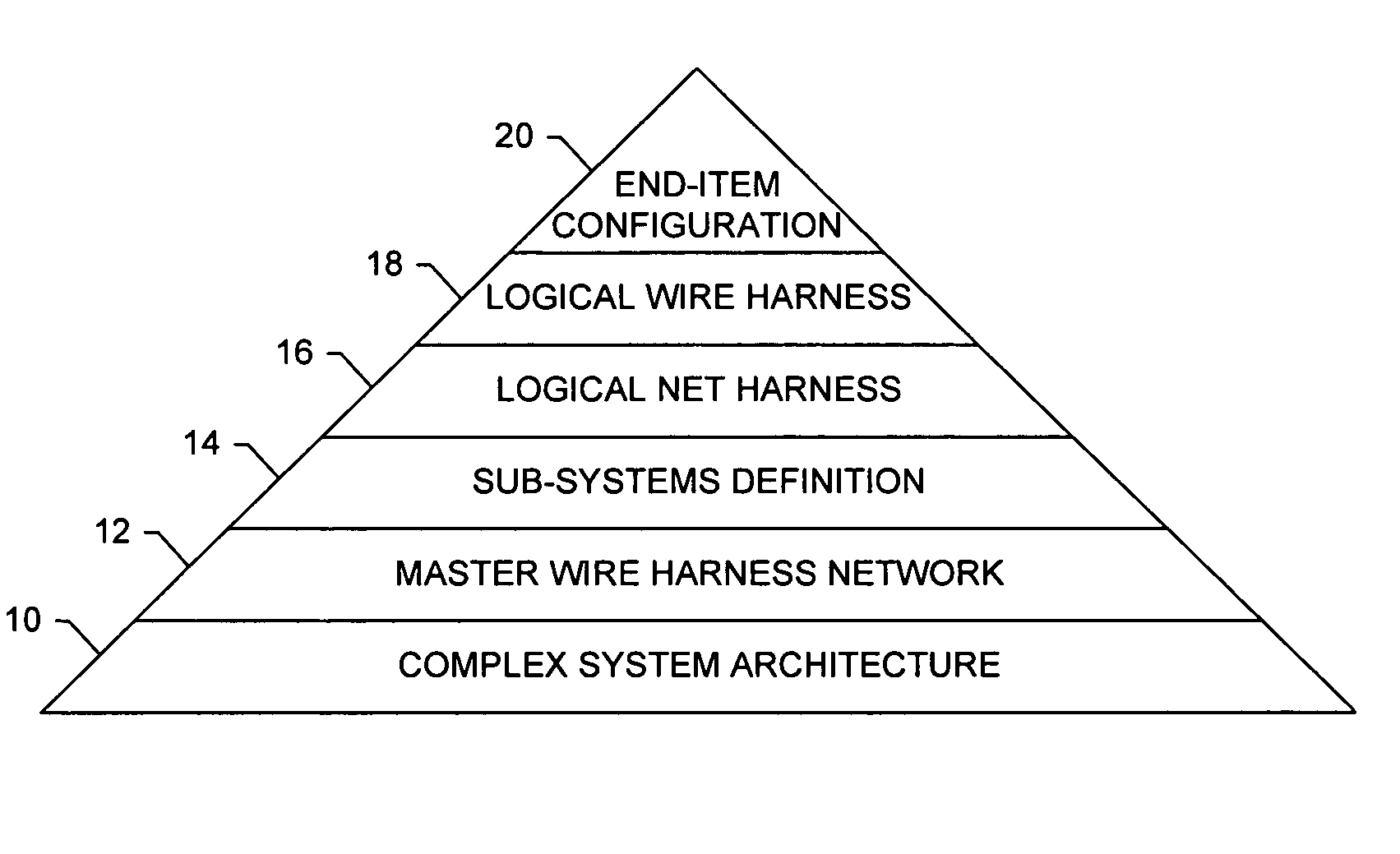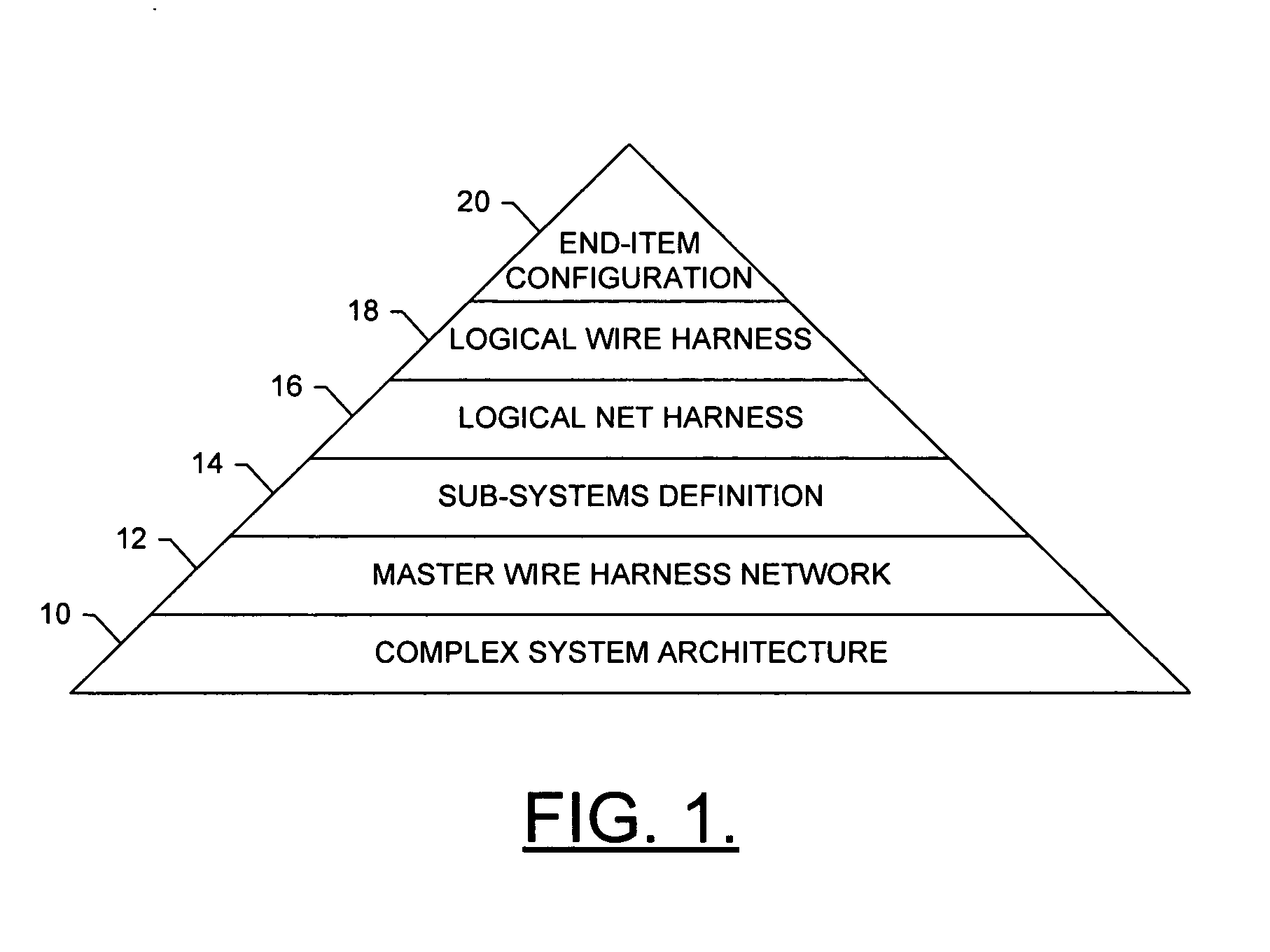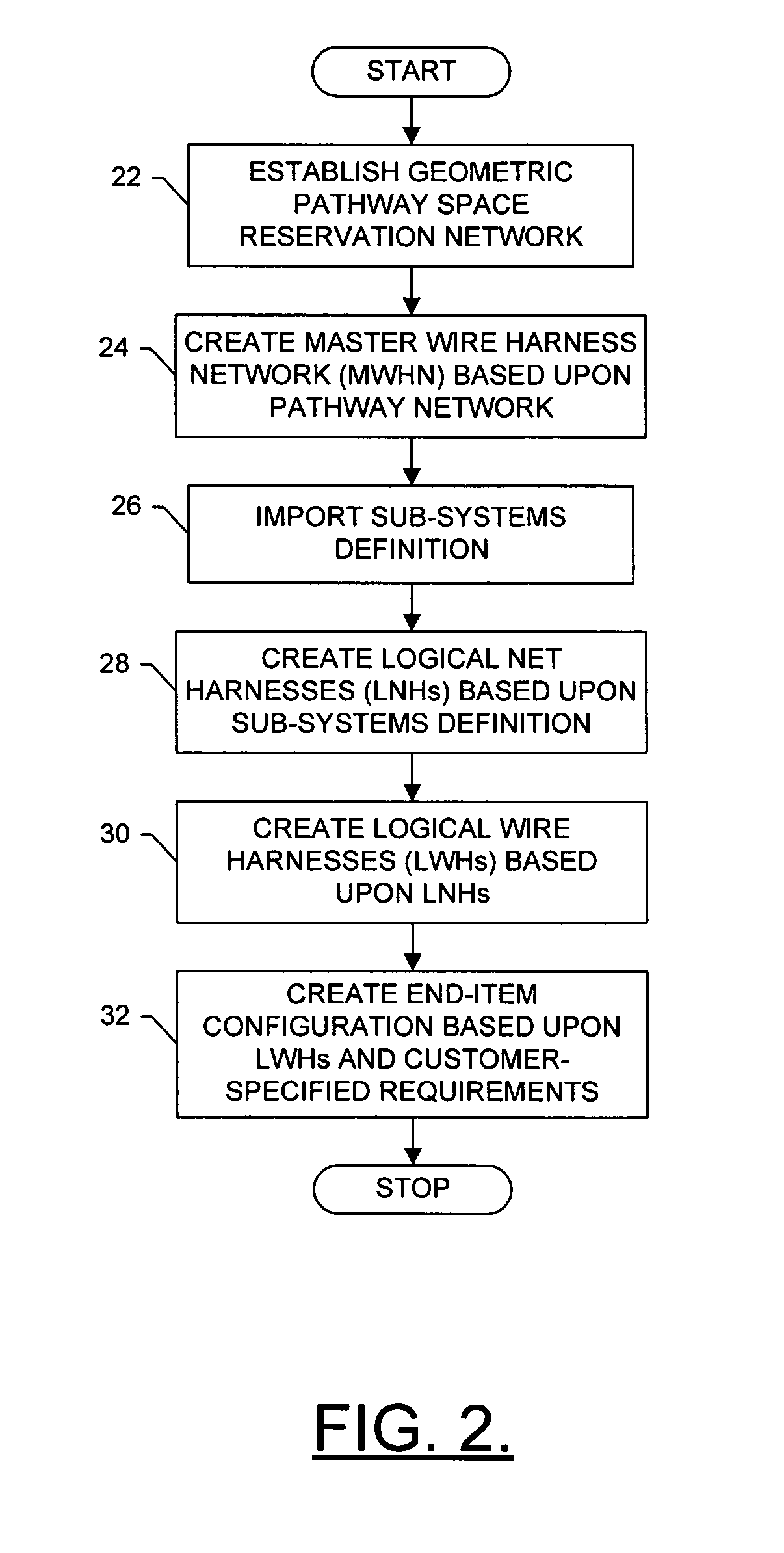Topology-driven apparatus, method and computer program product for developing a wiring design
a topology-driven, wiring design technology, applied in the direction of static indicating devices, instruments, manufacturing tools, etc., can solve the problems of manual development of wiring designs, serial and often with a high rate of change, repetitive development, and the inability to overcome process and tool shortcomings, so as to facilitate effective implementation of design process/standards/constraints, enhance/maintain the design and data integrity
- Summary
- Abstract
- Description
- Claims
- Application Information
AI Technical Summary
Benefits of technology
Problems solved by technology
Method used
Image
Examples
Embodiment Construction
[0024] The present invention now will be described more fully with reference to the accompanying drawings, in which some, but not all embodiments of the invention are shown. This invention may be embodied in many different forms and should not be construed as limited to the embodiments set forth; rather, these embodiments are provided so that this disclosure will be thorough and complete, and will fully convey the scope of the invention to those skilled in the art. Like numbers refer to like elements throughout.
[0025] Referring to FIGS. 1 and 2, a hierarchical organization and flowchart are presented for developing a wiring design for a complex system, in accordance with exemplary embodiments of the present invention. At the outset, it is important to note that exemplary embodiments of the present invention may be implemented to develop a wiring design for any type of simple or complex system. The network system may be resident in an automobile, aircraft, spacecraft, vehicle, build...
PUM
| Property | Measurement | Unit |
|---|---|---|
| physical | aaaaa | aaaaa |
| physical shape | aaaaa | aaaaa |
| local area network | aaaaa | aaaaa |
Abstract
Description
Claims
Application Information
 Login to View More
Login to View More - R&D
- Intellectual Property
- Life Sciences
- Materials
- Tech Scout
- Unparalleled Data Quality
- Higher Quality Content
- 60% Fewer Hallucinations
Browse by: Latest US Patents, China's latest patents, Technical Efficacy Thesaurus, Application Domain, Technology Topic, Popular Technical Reports.
© 2025 PatSnap. All rights reserved.Legal|Privacy policy|Modern Slavery Act Transparency Statement|Sitemap|About US| Contact US: help@patsnap.com



